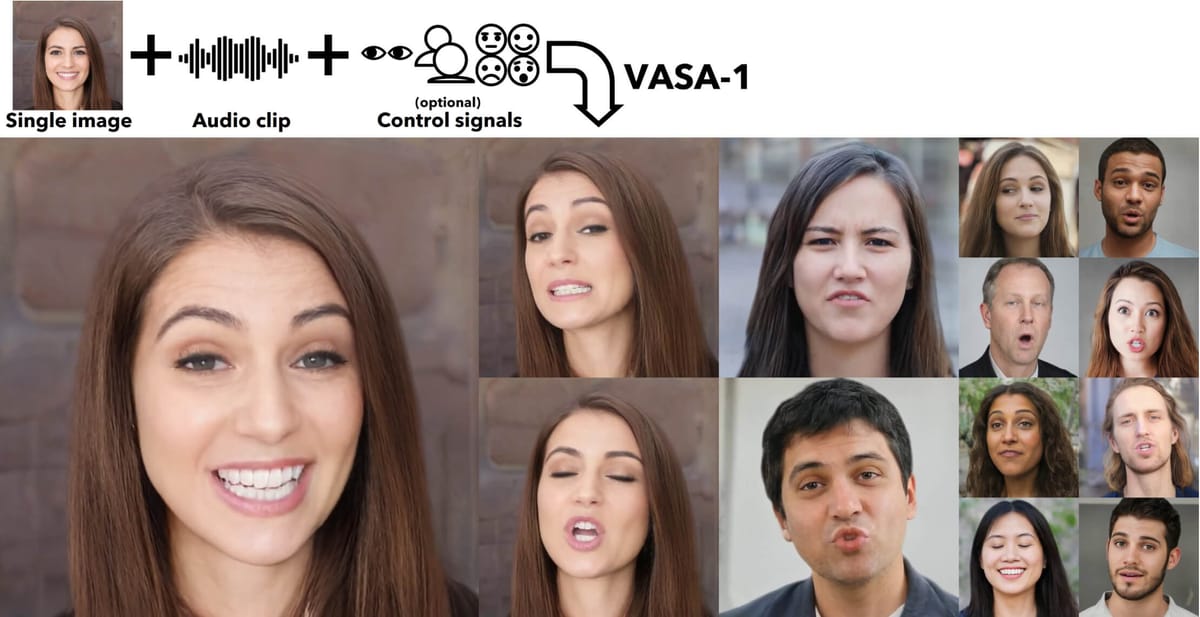
Microsoft researchers have unveiled VASA-1, a novel AI model that generates strikingly realistic talking face videos from just a single image and an audio clip. The results are not only lip-synced with precision, but also exhibit lifelike facial expressions and natural head movements.
|
|
|
The core of VASA is a diffusion-based holistic facial dynamics and head movement generation model that operates in a face latent space. The key innovations behind model are twofold. First, it employs a holistic approach to generating facial dynamics and head movements in a learned face latent space, rather than modeling different factors separately as done in previous methods. Second, the face latent space itself is carefully designed and trained on a large corpus of videos to achieve both high expressiveness in capturing detailed facial appearance and nuanced dynamics, and effective disentanglement between facial expression, head pose, and identity.
In experiments, VASA-1 significantly outperforms state-of-the-art methods across multiple metrics evaluating lip synchronization, head motion realism, and overall video quality. Qualitatively, the generated videos demonstrate a remarkable leap in the authenticity of synthesized talking faces. The model can handle challenging scenarios like artistic photos, singing audio, and non-English speech, despite not being trained on such data.
VASA-1 can generate 512x512 pixel videos at up to 40 frames per second with minimal latency, making it promising for real-time applications. The model also allows optional control of the generated gaze direction, head distance, and emotion, enabling further flexibility.
In testing, VASA-1 demonstrated superior performance over existing methods in several key metrics, including the quality of lip synchronization to audio and the natural appearance of head movements. Researchers employed a set of new evaluation techniques specifically developed to measure the effectiveness of these animations, confirming the model's advanced capabilities.
While acknowledging the potential for misuse, the researchers emphasize the substantial positive potential of this technology in domains like education, accessibility, and healthcare.

